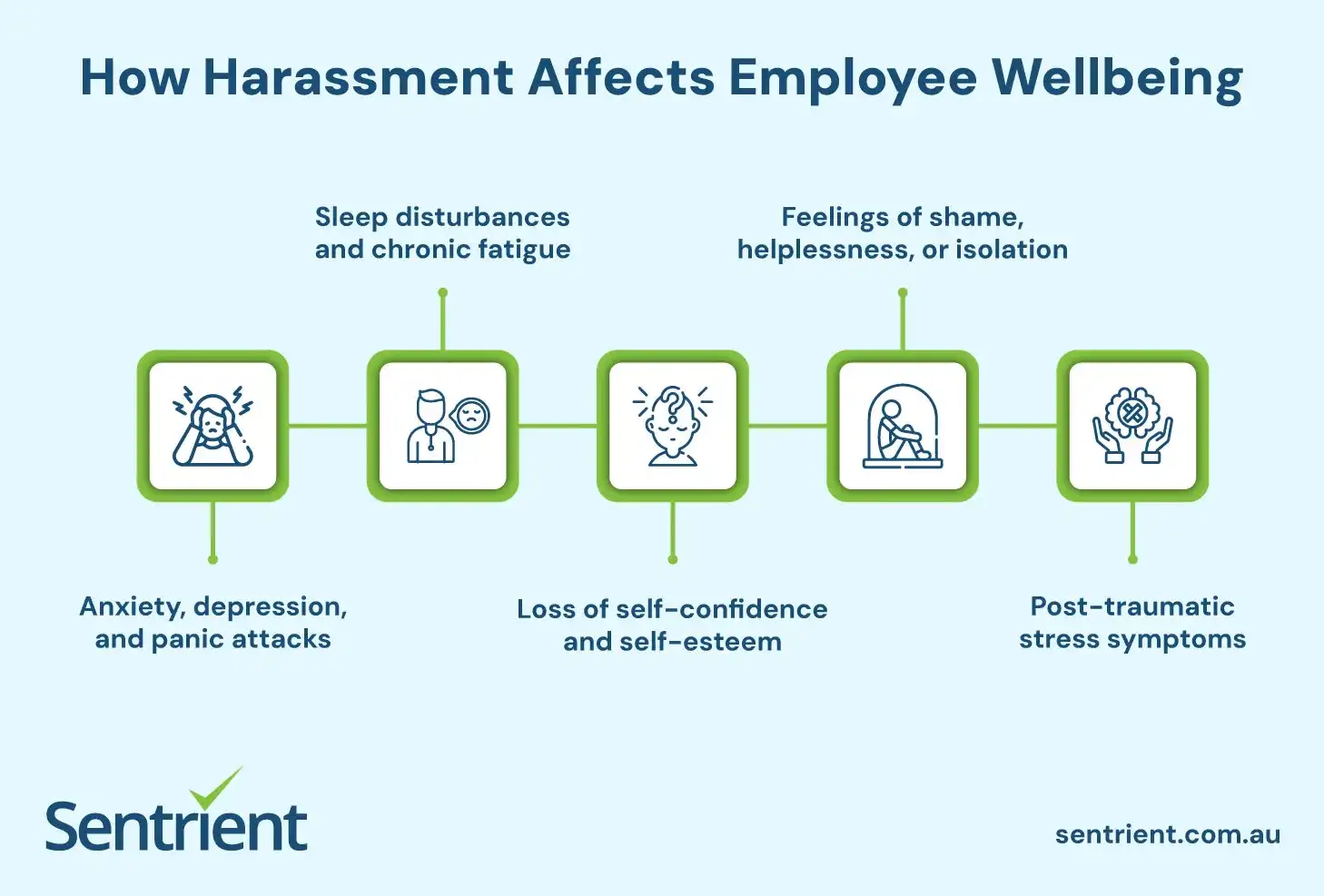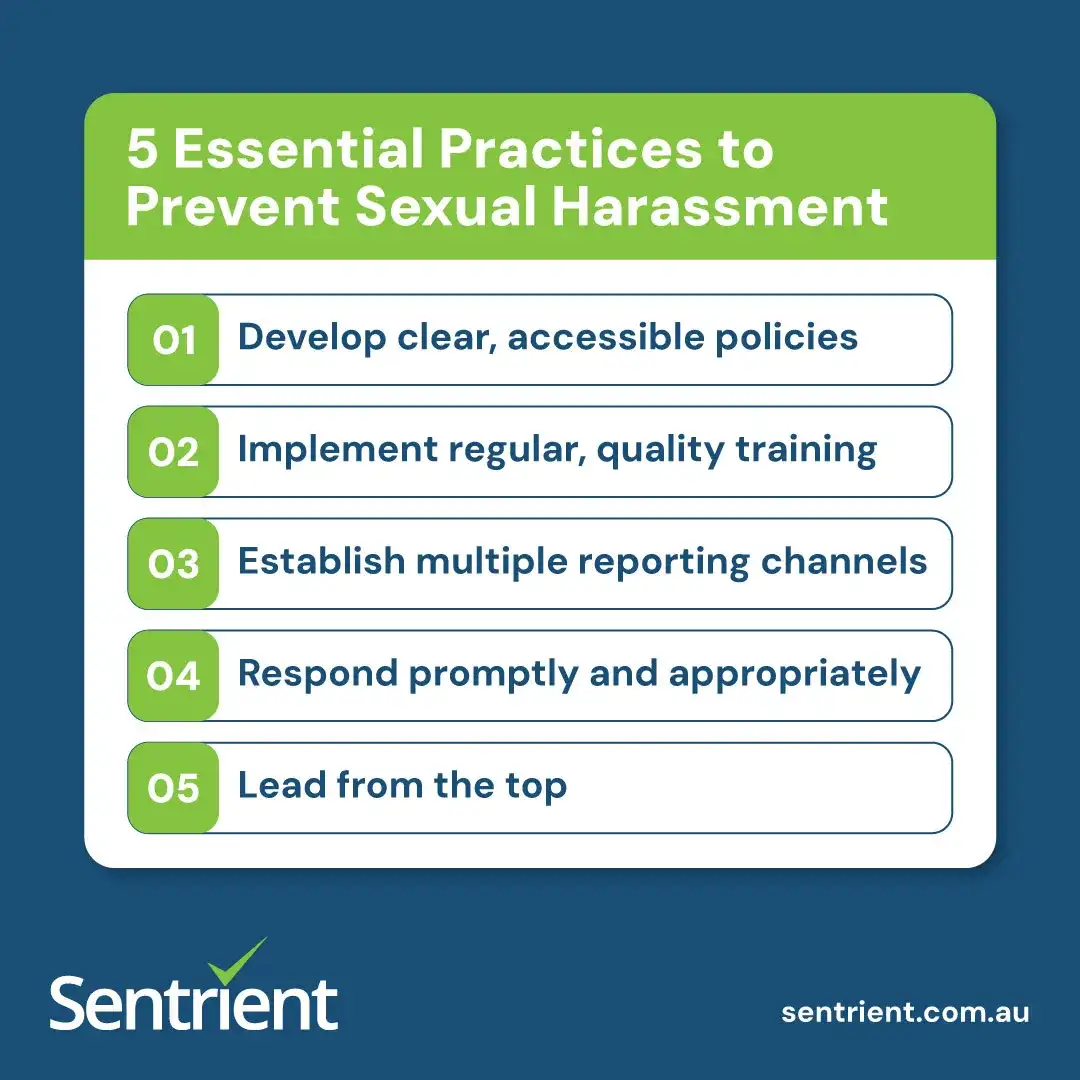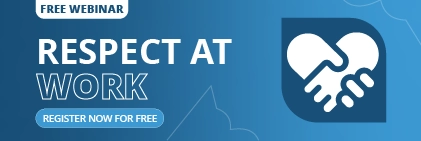Workplace sexual harassment continues to be a significant challenge for organisations across Australia and New Zealand. Despite increased awareness and evolving legislation, many businesses struggle to effectively address and prevent this serious workplace issue.
This harmful behaviour creates unsafe work environments, damages mental health, reduces productivity, and exposes organisations to substantial legal and reputational risks. Recent Australian Human Rights Commission data shows that one in three Australians has experienced sexual harassment at work in the past five years, making this issue both prevalent and concerning.
For HR managers, compliance officers, and business leaders, understanding these risks and impacts is essential for creating safer workplaces and protecting both employees and the organization itself.
What Constitutes Sexual Harassment in Australian Workplaces?
Sexual harassment refers to unwelcome conduct of a sexual nature that makes a person feel offended, humiliated, or intimidated. Under the Sex Discrimination Act 1984, Australian employers are legally required to take all reasonable steps to prevent and address such behaviour.
Common examples include:
- Unwanted physical contact or advances
- Sexually explicit comments, jokes, or messages
- Intrusive questions about someone’s private life
- Displaying offensive material
- Requests for sexual favours
Crucially, sexual harassment doesn’t need to be repeated or intentional to qualify. A single incident can constitute harassment if it creates a hostile or unsafe environment for the affected person.
How Does Sexual Harassment Affect Employee Wellbeing?

- Anxiety, depression, and panic attacks
- Sleep disturbances and chronic fatigue
- Loss of self-confidence and self-esteem
- Feelings of shame, helplessness, or isolation
- Post-traumatic stress symptoms
Research from Safe Work Australia shows that workplace sexual harassment significantly increases the risk of mental health conditions. Affected employees are twice as likely to develop psychological disorders compared to those in harassment-free environments.
What Impact Does Sexual Harassment Have On Job Performance?
Beyond the personal toll, sexual harassment directly impacts workplace productivity and engagement. Affected employees frequently experience:
- Increased absenteeism and sick leave usage
- Reduced concentration and attention to detail
- Withdrawal from team activities and collaboration
- Decreased job satisfaction and motivation
- Higher likelihood of leaving the organisation
These effects ripple throughout the workplace, creating tension, disrupting team dynamics, and ultimately harming organisational performance and output.
What Are The Financial Costs To Businesses?
Sexual harassment carries significant economic consequences for Australian organisations. According to a 2018 report by PwC and the Australian Human Rights Commission, workplace sexual harassment is estimated to cost the Australian economy approximately $3.8 billion annually through lost productivity, staff turnover, absenteeism, and legal costs.
For individual businesses, costs typically include:
| Cost Category | Examples |
|---|---|
| Direct Costs | Legal fees, settlements, compensation payments |
| Operational Costs | Investigation time, increased turnover, recruitment expenses |
| Productivity Costs | Absenteeism, reduced output, team disruption |
| Reputational Damage | Customer loss, difficulty attracting talent, negative publicity |
With potential compensation payments reaching hundreds of thousands of dollars in serious cases, the financial implications can be substantial – particularly for smaller organisations with limited resources.
How Does Workplace Culture Influence Harassment Prevalence?
Organisational culture either prevents or enables sexual harassment. Environments with these characteristics tend to have higher incidents:
- Power imbalances and highly hierarchical structures
- Male-dominated leadership and workforce
- Lack of diversity and inclusive practices
- Tolerance for inappropriate behaviour
- Poor communication channels for reporting
Conversely, organisations that prioritise respect, transparency, and accountability generally experience fewer harassment issues. Building a culture where inappropriate behaviour is neither tolerated nor ignored is fundamental to prevention.
What Legal Obligations Do Australian Employers Have?
Australian businesses must comply with multiple legal frameworks regarding workplace sexual harassment:
- Sex Discrimination Act 1984: Prohibits sexual harassment and makes employers potentially liable for employee conduct. Since 2023, employers have a positive duty of care to eliminate sexual harassment in connection with work as far as is reasonably possible.
- Fair Work Act 2009: Now explicitly prohibits sexual harassment in connection with work, with protection extending to contractors, volunteers, and prospective workers. Employers bear responsibility for sexual harassment by employees unless they took all reasonable steps to prevent it.
- Work Health and Safety Act 2011: Requires employers to provide psychologically safe workplaces.
Organisations must demonstrate they’ve taken “all reasonable steps” to prevent harassment, which typically includes implementing policies, providing training, and establishing reporting procedures.
Failure to meet these obligations results in significant penalties, including substantial fines and compensation orders. The Australian Human Rights Commission now has regulatory powers to investigate and enforce compliance with these obligations.
How Can Organisations Effectively Prevent Sexual Harassment?

1. Develop clear, accessible policies
Create detailed policies that define unacceptable behaviour and outline reporting processes and consequences. Write these in plain language and make them easily accessible to all staff.
2. Implement regular, quality training
Conduct mandatory training for all employees, with specialised sessions for managers. Make training interactive and scenario-based, refreshing it regularly to maintain awareness.
3. Establish multiple reporting channels
Provide various reporting options, including anonymous channels. Remove barriers to reporting and ensure procedures are victim-centred and trauma-informed.
4. Respond promptly and appropriately
Investigate all complaints thoroughly and promptly. Take interim measures to protect complainants during investigations and ensure appropriate consequences for substantiated cases.
5. Lead from the top
Ensure leadership consistently models appropriate behaviour and clearly communicates a zero-tolerance approach. Leaders should actively participate in prevention initiatives.
What Role Do Bystanders Play In Prevention?
Bystander intervention has become crucial in preventing workplace sexual harassment. When properly trained, colleagues can:
- Directly intervene when witnessing inappropriate behaviour
- Distract from or diffuse potentially harmful situations
- Delegate by seeking help from supervisors or HR
- Document incidents to support affected colleagues
- Delay action but follow up when it’s safer to do so
Encouraging a workplace culture where everyone feels responsible for maintaining respectful behaviour significantly reduces harassment incidents and creates a collective sense of safety.
How Can Technology Support Compliance And Prevention?
- Modern compliance and HR management systems offer powerful tools for addressing workplace sexual harassment:
- Policy management platforms: Ensure policies remain up-to-date, accessible, and acknowledged by all employees
- Online training modules: Deliver consistent, engaging education that can be tracked and reported
- Reporting systems: Provide secure, confidential channels for raising concerns
- Case management tools: Track investigations and outcomes to identify patterns
- Data analytics: Monitor trends and hotspots to target prevention efforts
These technological solutions help organisations systematise their approach to prevention and response, particularly benefiting those without large HR teams.
Conclusion
Workplace sexual harassment presents serious risks to both employees and organisations. From psychological harm and reduced productivity to legal liability and reputational damage, the impacts are far-reaching and significant.
However, with a strategic, proactive approach that combines clear policies, quality training, supportive culture, and appropriate response mechanisms, Australian businesses can substantially reduce these risks.
Creating safe, respectful workplaces isn’t just a legal obligation – it’s a business imperative that improves performance, engagement, and organisational success.
If your organisation needs to strengthen its approach to preventing workplace sexual harassment, Sentrient’s comprehensive compliance management solutions can help. Our Australian-designed platform offers policy templates, interactive training modules, and reporting tools specifically tailored to local requirements.
Ready to get started? Explore our specialised training courses:
- Sexual Harassment Prevention Training Course: Comprehensive training for all employees to recognise, prevent, and respond to sexual harassment in the workplace.
- Sexual Harassment Training Course for Managers and Supervisors: Specialised training for leadership teams on handling complaints, conducting investigations, and creating safe workplace cultures.
Contact Sentrient today to learn how we can help you build a safer workplace and protect your people and your business.
FAQs
1. How frequently should we conduct sexual harassment training?
Best practice involves providing refresher training at least annually, with additional sessions when policies change or for new starters. Sentrient’s learning management system helps you schedule and track completion.
2. What should we do if sexual harassment occurs despite preventative measures?
Respond promptly following your established procedures. Investigate thoroughly, support the affected employee, and take appropriate disciplinary action. Document all steps taken to demonstrate you’ve fulfilled your legal obligations.
3. Can small businesses without HR departments effectively manage harassment risks?
Absolutely. Sentrient’s compliance solutions are specifically designed to help small and medium businesses implement professional-grade policies, training, and reporting systems without requiring a dedicated HR team.
4. Are employers liable for harassment that occurs at work-related social events?
Yes. Australian law considers work-related social events, including after-hours functions and office parties, as extensions of the workplace. The same obligations to prevent harassment apply in these settings.
5. How do we measure the effectiveness of our sexual harassment prevention program?
Track metrics such as training completion rates, policy acknowledgements, reporting frequency, investigation outcomes, and employee feedback. Regular culture surveys can also help assess whether employees feel safe and respected.
Read More:
- Understanding Workplace Sexual Harassment: What Constitutes Unacceptable Behaviour?
- The 5 Most Obvious Benefits Of Workplace Sexual Harassment Training
Wraps up in 4 Minutes - Workplace Sexual Harassment Complaint Procedure
- How To Identify, Prevent, And Respond To Sexual Harassment In The Workplace
- 7 Steps To Investigate A Complaint of Sexual Harassment In The Workplace





